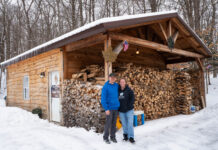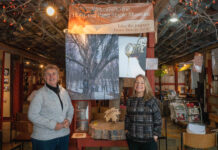WASHINGTON — The U.S. Department of Agriculture has announced $4 million in assistance for select farmers, ranchers and forest landowners working to improve food sources for honey bees on private lands in Midwestern and northern plains states.
The targeted conservation effort by USDA’s Natural Resources Conservation Service aims to improve the health of this critical pollinator in a region where more than two-thirds of the nation’s honey bee population spends the summer months, pollinating crops and building strength to survive winter.
“The future of our food supply depends on honey bees,” NRCS Chief Jason Weller said. “This effort partners with farmers, ranchers and forest landowners to ensure honey bees have safe and diverse food sources during a time when they need it most.”
Major role
Honey bees pollinate an estimated $15 billion worth of crops annually, including more than 130 fruits and vegetables. One out of every three bites of food in the United States depends on honey bees and other pollinators.
But honey bee populations have suffered significant declines in recent years. NRCS is working with landowners in Michigan, Minnesota, Montana, North Dakota, South Dakota and Wisconsin to make bee-friendly conservation improvements to their land, such as planting cover crops, wildflowers or native grasses and improving management of grazing lands.
From June to September this six-state region is home to more than 70 percent of the commercially managed honey bees in the country. These are critical months when bee colonies need abundant and diverse forage to store enough food for winter.
During the first two years of this targeted campaign, NRCS and landowners have boosted available food for honey bees on around 35,000 acres in Michigan, Minnesota, North Dakota, South Dakota and Wisconsin.
NRCS expanded the effort into Montana this year because of the state’s prominent role in honey production.
Providing food
Planting wildflowers, native grasses and cover crops like buckwheat, mustard, clover and sunflowers provides high value food for honey bees.
Cover crops also increase soil nutrients, break pest cycles and increase organic matter in the soil.
NRCS also works with landowners to ensure pasturelands and rangelands include a good variety of legumes, forbs and shrubs that also provide pollen and nectar. These conservation improvements not only benefit the bees, they also strengthen agricultural operations, support other beneficial insects and wildlife, and improve other natural resources.
Appropriate cover crops and better rangeland and pasture management reduce erosion, increase soil health, inhibit the expansion of invasive species and provide food and habitat for insects and wildlife.
The 2014 Farm Bill’s Environmental Quality Incentives Program (EQIP) program provides funding for this work. NRCS accepts EQIP applications on a continuous basis.
Learn more
Landowners interested in participating should contact their local USDA service center to learn more. Landowners not in this region are also eligible for assistance to make conservation improvements to their land that benefit honey bees and many other pollinators, such as monarch butterflies and native bees.
More than three-dozen conservation practices offered by NRCS can provide benefits to pollinators. For more on technical assistance and financial resources available through NRCS conservation programs, visit www.nrcs.usda.gov/GetStarted, or call your local USDA service center.










